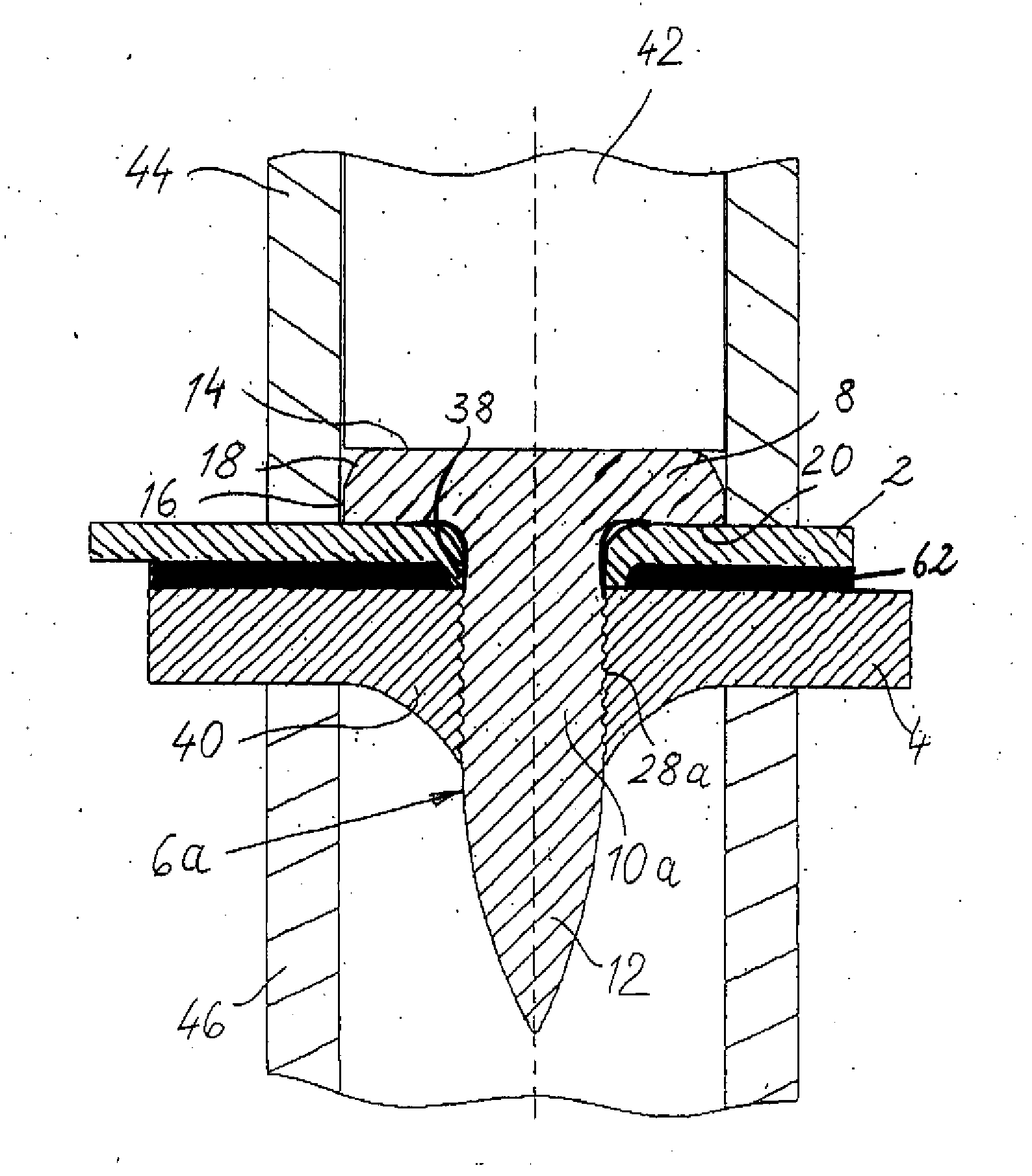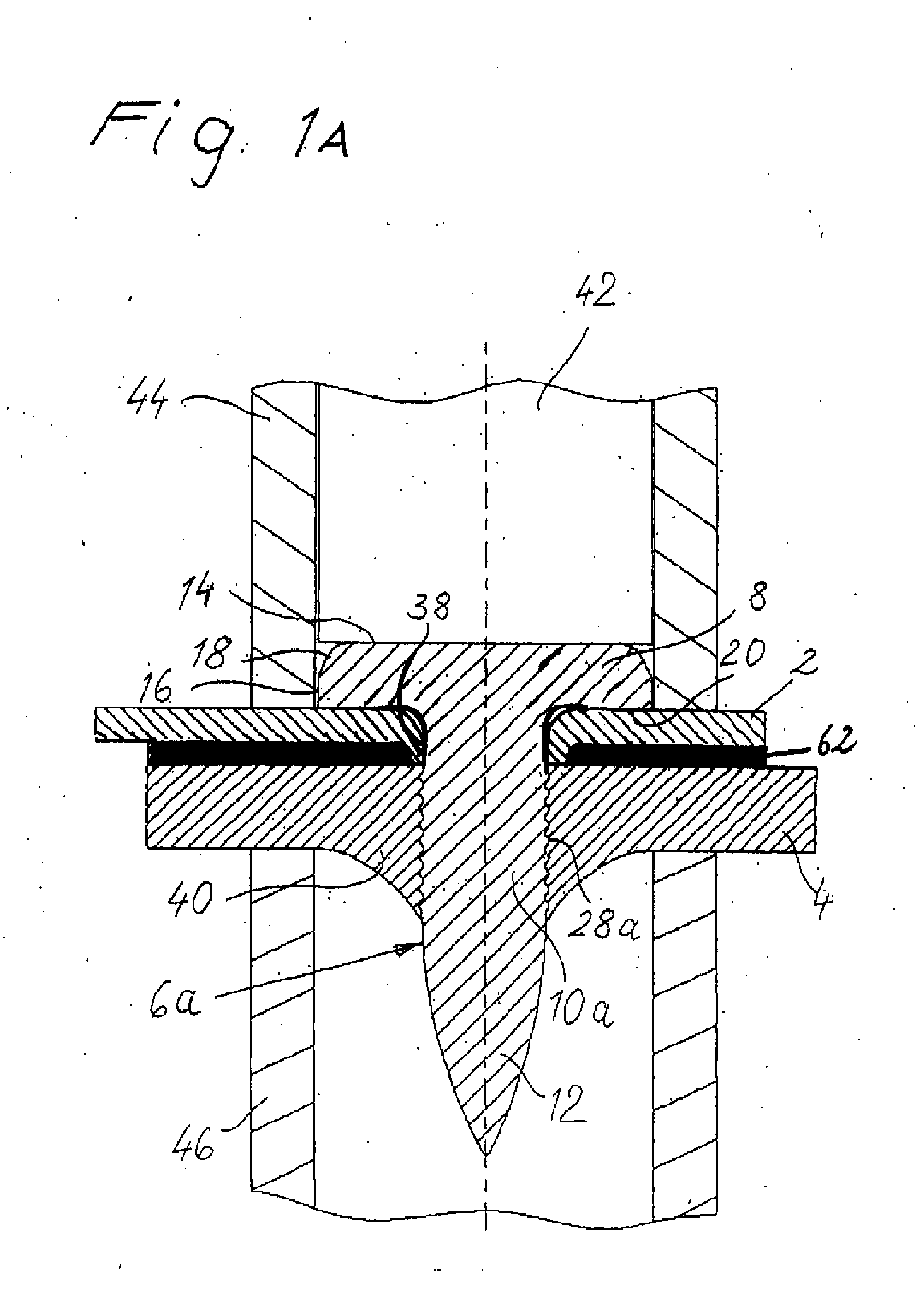Method for Establishing a Nail Connection and a Nail for This Purpose
a technology of connecting threads and nails, which is applied in the direction of nails, bolts, fastening means, etc., can solve the problems of inability to accurately connect the thread of the screw with the hole shot into the sheet, the plurality of process steps to be executed is a disadvantage, and the connection method is not suitable for the fastening of sheets on extrusion profiles. , to achieve the effect of low jointing time, high connection quality and simple method
- Summary
- Abstract
- Description
- Claims
- Application Information
AI Technical Summary
Benefits of technology
Problems solved by technology
Method used
Image
Examples
Embodiment Construction
[0031]FIG. 1 shows a completed connection between a component 2 and a component 4 by means of a nail 6a. In the exemplary embodiment shown, the component 2 is a thin-walled component in the form a sheet and the component 4 is a component with a greater wall thickness, which is a profile component for example. For example, these can be body parts for vehicle construction although the invention is not limited to this.
[0032]The components 2, 4 can be made of steel, aluminum, magnesium or plastic with or without fiber content. They are not preholed before the jointing method, as will be explained in greater detail below.
[0033]As can be seen in FIGS. 1 and 2, the nail 6a consists of a nail head 8, a nail shank 10a and a nail point 12. It is also preferred to design the nail as a functional bolt as described in DE 10 2007 017 590.8.
[0034]The nail head 8 is a flat head with an even top side 14, a cylindrical circumferential surface 16 and an even bottom side 20.
[0035]The nail shank 10a is ...
PUM
| Property | Measurement | Unit |
|---|---|---|
| angle | aaaaa | aaaaa |
| speed | aaaaa | aaaaa |
| speed | aaaaa | aaaaa |
Abstract
Description
Claims
Application Information
 Login to View More
Login to View More - R&D
- Intellectual Property
- Life Sciences
- Materials
- Tech Scout
- Unparalleled Data Quality
- Higher Quality Content
- 60% Fewer Hallucinations
Browse by: Latest US Patents, China's latest patents, Technical Efficacy Thesaurus, Application Domain, Technology Topic, Popular Technical Reports.
© 2025 PatSnap. All rights reserved.Legal|Privacy policy|Modern Slavery Act Transparency Statement|Sitemap|About US| Contact US: help@patsnap.com



